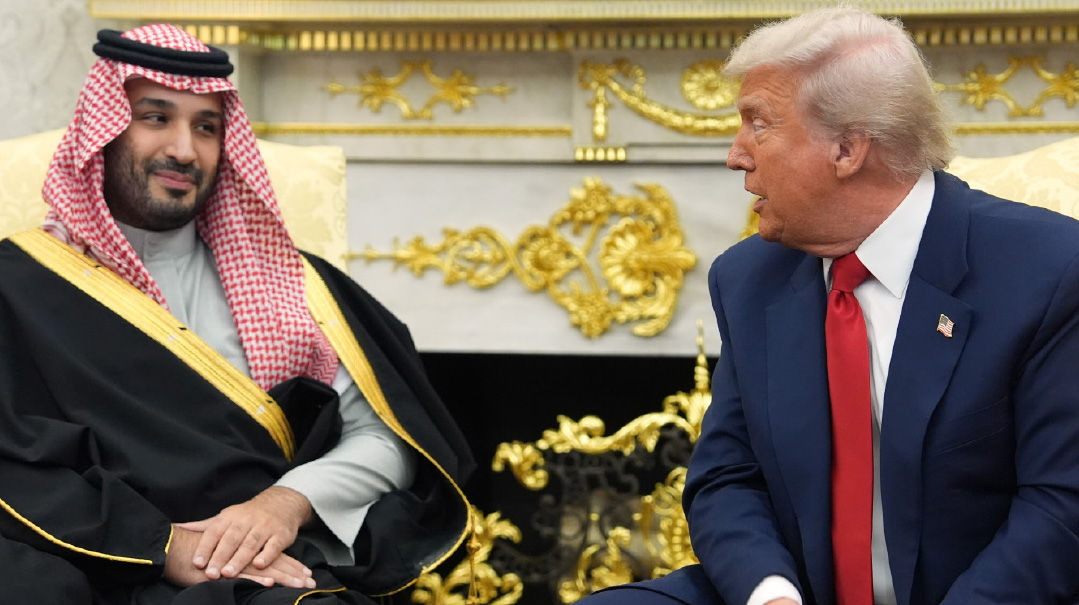The Democrats’ November Weak Spot

Voters are more likely to blame the party in power than the party seeking to regain power

IT’S
quite possible that a Trump-era nominee could prove disruptive and even decisive to the 2024 presidential campaign, although not intentionally or directly.
We’re not referring to any of the three justices Trump appointed to the Supreme Court, who now form a rock-solid conservative majority that has elated the Trump base while simultaneously motivating Democrats to initiate unprecedented reforms in how the court operates.
The reference here is to Jerome Powell, the most powerful central banker in the world, who took ownership of last week’s controversial Federal Reserve Board decision not to cut interest rates to stimulate an economy showing growing signs of weakness.
It was Trump who elevated Powell to Fed chairman in 2018, although it didn’t take long for the president to turn on his appointee — at that time for not being more aggressive in cutting rates. Powell has now served under three successive administrations. President Obama first nominated Powell to the Fed Board of Governors in 2012. President Biden renominated Powell for a second term in 2022, but it is Kamala Harris, whom Biden “nominated” as his successor, who could thrive or flop at the polls depending on what the Fed does when it meets again in September.
The Fed controls US monetary policy, mainly through its power to raise or lower short-term interest rates. Fed decisions directly impact the rates consumers pay for mortgages or car loans and those that corporations pay when borrowing to expand their businesses or refinance debt. Central banks worldwide tend to follow the Fed’s lead, so Fed policy plays an outsized role in the global economy.
The growing consensus in the financial community is that the Powell-led Fed has whiffed mightily twice during his tenure as chairman. With the most sophisticated economic forecasting tools in its arsenal, the Fed failed to foresee and was late to acknowledge America’s worst outbreak of inflation in more than 30 years. Instead of raising rates early and gradually to control the inflationary spiral, the Fed went on a binge, raising rates 11 times in 16 months between March 2022 and July 2023.
In 2024, the economy has reversed course, with mounting signs of decelerating inflation paired with sluggish growth. The Fed seems stuck in the mud again, stubbornly staying its course despite calls by influential economists, bankers, and former Fed governors to cut rates now.
Last Wednesday’s Fed decision to keep interest rate cuts on hold blew up in their faces two days later when the Labor Department’s monthly employment report showed lower-than-expected job creation and higher-than-expected unemployment, numbers that many economists contend triggered a key indicator of an imminent recession.
Political Ditch-Digging
The Fed’s slow reaction time is now a political football, with the presidential election three months away. Chairman Powell did hint at a news conference last week that the Fed might begin cutting rates when its Open Market Committee meets again in September.
Criticism of Powell is bipartisan. Senator Rick Scott (R-FL), a longstanding Fed critic, wrote Powell last week, repeating his ongoing theme that Powell has “overseen a wildly unaccountable Fed, which has grossly mismanaged US monetary policy.”
Senator Elizabeth Warren (D-MA), who also takes a dim view of Fed policy, called on Powell to cut his summer vacation short and cut rates now because “waiting too long risks driving the economy into a ditch.”
Warren’s unstated concern, but one that Democrats fear, is that an economy in the ditches will deflate Kamala Harris’s tires. The more she’s forced to defend the Biden administration’s economic track record, the harder it will be for her to take the attack to the Republicans.
Donald Trump challenged Powell in June, telling an interviewer from Bloomberg Businessweek that he supports rate cuts, but not before the election.
“It’s something they know they shouldn’t be doing,” Trump said.
Powell pushed back strongly against those concerns at a news conference last week, saying the Fed is and always has been an apolitical body.
“Anything that we do before, during, or after the election will be based on the data, the outlook, and the balance of risks, and not on anything else,” Powell said.
Bragging Rights
Barring any upside surprises in the August and September inflation data, it’s a foregone conclusion that the Fed will begin to cut rates in September. You don’t have to look any further than the reaction of the bond markets last Friday, when interest rates on government bonds fell precipitously, to understand that the markets are leading the charge downward. Once again, Powell’s Fed has fallen behind the curve and is playing catchup.
Perhaps Trump wants Powell to wait until he becomes president so he can claim the bragging rights, but even a sitting president can’t force the Fed to act. The Fed makes its decisions independent of the executive and legislative branches, so there is little that Trump or Harris can do to influence Powell between now and the election, or even after.
It’s also unclear that a September interest rate cut would buoy Harris more than Trump.
The economic rule of thumb is it often takes up to a year for consumers to benefit from rate cuts. One reason is that one cut normally leads to another, and another. Once an easing cycle begins, consumers prefer to wait until the cycle plays out so that they borrow at the lowest rates possible.
A July Gallup Poll shows that 33% of the public view the economy as the most important problem facing the country today, with 13% singling out inflation.
According to McLaughlin and Associates, one of Trump’s pollsters, that number is much higher, with 64% saying the economy is worsening, 45% citing economic issues as their top concern, and 84% saying inflation has negatively impacted them.
Chairman Powell is taking a lot of heat, but he’s not running for president. Trump and Harris are. So, while a September rate cut would provide a psychological boost, the lag time before it’s felt will be significant.
It won’t be enough to brighten people’s moods or to change their opinion of which party or candidate they prefer to scapegoat. That’s where the Democrats are at a disadvantage, as voters are more likely to blame the party in power than the party seeking to regain power.
(Originally featured in Mishpacha, Issue 1023)
Oops! We could not locate your form.







